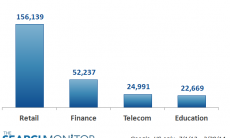What I know about pharmaceutical regulation fits snugly in a thimble. But I know a lot about Internet marketing. I started to wonder about how regulation and Internet marketing work together in the pharmaceutical industry after watching the drama play out recently over letters sent from the U.S. Food and Drug Administration warning drug companies about their paid search ads.
The dilemma for the FDA is simple enough: How does a regulatory agency allow one form of advertising to operate under a different set of rules than other advertising?
That’s the big issue here as the FDA seeks to ensure that advertising on the Internet isn’t misleading consumers. The FDA has many regulations designed to prevent drug companies from advertising all the benefits of their drugs without the risks, and while it’s painful to listen to the announcer talking 100 miles an hour at the end of the radio commercial, at least the consumer gets the idea that there might be drawbacks to this drug.
But how do you enforce the same policy for paid search? Paid search formats are limited to so little text that even writing “This drug has risks–consult your doctor” would take up a good chunk of the ad.
Until these recent letters from the FDA, pharmaceutical companies had wrongly assumed that if they provided all the required risk information on the page that the paid search ad links to that they were safe. Now, the industry is scrambling to comply with the letters that tell them what they are doing wrong, but don’t yet clearly spell out how to do things right.

Image by massdistraction via Flickr
Some companies have taken to avoiding the use of brand names in ads, including using generic URLs that redirect to brand name sites. Google does not allow this kind of redirection for any except the pharmaceutical industry, ironically because it’s considered misleading to searchers. But Google is relaxing its standards rather than lose the lucrative paid search ads from drug companies.
It’s possible that the FDA’s stance on this issue could force pharmaceutical companies to largely withdraw from paid search, which would be a blow to both the pharmaceutical and paid search industries. I’m not sure that would be a tragedy–I don’t see too many pharma ads on billboards or matchbook covers, which also seem like places where spelling out the risks might be difficult.
But the law of unintended consequences must be considered also. We need to think about what ads will appear for pharmaceutical search terms if the drug company ads don’t. Will they be ads from less scrupulous companies? Or from companies that operate outside the U.S. (and outside the FDA’s reach)?
A similar dynamic operates in affiliate marketing, where merchants seek to prevent affiliates from buying terms with the merchants’ brand names. Some merchants found out that by shutting out their affiliate partners, they merely opened up the space for companies they were even less happy to see on that search results page.
I don’t envy the FDA’s situation. The FDA can’t say, “Well, if other countries allow it, we should.” They also might be hard-pressed to say, “This won’t confuse consumers online that it would confuse in print.”
I wonder if the FDA would be happy with a technical enhancement, where Google allows a mouseover on the paid search ad to reveal the risks. Or if Google provided an icon with a link to the risks from within the ad (in addition to showing the risks on the ad landing page, as the companies do today).
Regardless, this story will have many twists and turns before the end is written. The three parties involved (the pharmaceutical companies, the FDA, and the search engines) can all change what they do multiple times before an equilibrium is reached. And you should expect to see the same kind of issues crop up in social media and possibly other Internet marketing techniques also, as the lines between public relations and advertising become more and more blurry.


![Reblog this post [with Zemanta]](http://img.zemanta.com/reblog_e.png?x-id=c33dca97-7de0-4fda-9e47-5b143d75fcc7)


